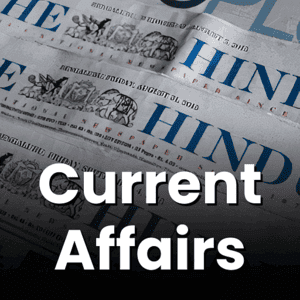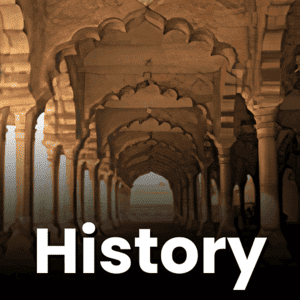Evolution Of British Indian Administration | Additional Study Material for UPSC PDF Download
EVOLUTION OF BRITISH INDIAN ADMINISTRATION
Nature of State and Government Under British
- It was that of a colony or dependency in the British empire. The British Parliament possessed unrestricted power of legislation, though this legal sovereignty of Parliament over India was not expressly declared any where until 1858.
- however, facilitated the assumption of direct administration of India by the Crown. The Act of 1858,
Home Govememnt
- Absolute necessity of having an India Office in the White-hall, which came to be known as the Home Goe ern men t “.
- Company’s initial claims to its territories in India as private poverty and British Govemment’s tacit acceptance of the claim.
- British Governemnt dilernma to assume direct control or to leave it in the company’s hands.
- Act of 1773 found a via-media in remodelling the company’s governing body and establishing a Governor General-in-Council.
- Act of 1784 created a ‘double government’ system (court of Directors and Board of control).
- Direct administration of India by the Crown: Act of 1858 replaced the Board and the Court by Secretary of State for India and his Council respectively.
- Unquestioned authority of Home Government to control and direct authorities in India. But the necessity of carrying on the governemnt of India in India itself, and hence wise delegation of authority.
System of British Indian Government
- The system was unitary or highly centralised in nature. For it was supreme with undivided authority. The Presidency system, though historically on an earlier origin, died out in 1833, and the later revival of provincial governments was based on devolution and decentralisation.
Evolution of Unitary system or Centralised Government
- Initially no central authority in India with every presidency being directly responsible to the Company’s Directors.
- First signs of centralisation in the Act of 1773, which designated the Governor of Calcutta as Governor General of Bengal.
- Further strengthening of central government by the Act of 1793 and 1813, though the other presidencies continued to be independent in all matters except war and peace.
- Necessity of change due to territorial expansion in the 19th century. Act of 1833 invested the central authority in Calcutta with more powers and reduced others to mere agents.
- Confirmation of the trend of centralisation by the others Acts. Thus, the Unitary System set up in 1833 was in operation until 1919.
Process of Decentralisatlon and Devolution
- First attempt by Lord Mayo in 1870 in the sphere of finance, but real development only after 1918.
- Act of 1919 - division of the subjects between central and provincial governemnts; introduction of ‘Diarchy’ in the provinces.
- Act of 1935 - abolition of diarchy in the provinces and establishment of provincial autonomy.
STRUCTURE OF COLONIAL GOVERNMENT
Branches of the Governenment
Executive Branch
- Governor-General’s constitutional responsibility to the Secretary of State, and provincial heads answerability to the Governor-General. In practice, however, the ‘man on the spot’ theory held sway.
- Executive councils of the Governor-General and the Governors; reduction of their size after 1773.
- Intially the chiefs of the councils had no special powers, but later they were given the power to overrule their councils.
- Early cumbrous and dilatory procedure of the councils was replaced by the ‘portfolio system’ under Canning’s rules of business.
Legislative Branch
- Three principles of lawmaking in India.
- Legislative process - Governor General-in-Council was made the sole legislator for India by the Act of 1833; appointment of a Law Commission under Macaulay.
- Reorganisation of legislative machinery by the Act of 1853; creation of an ‘official ‘ legislature by adding more members to the Governor General’s council.
- Decentralisation of legislative authority by the Act of 1861 which established provincial legislatures.
- Enlargement of legislative councils and provision for election of members in 1892.
- Morley-Minto Reforms of 1909 and Montford Reforms of 1919.
Judicial Branch
- Warren Hastings’ efforts to establish a well-organised judicial system in 1772.
- Parallel system of courts, one subservient to the company and other independent of it, between 1781 and 1861.
- Establishment of a common system of High Courts in all presidencies by the Act of 1861.
- Two recurring problems - unwillingness of the Europeans to be tried by Indian Judges, and exeuctive officers exercising judicial authority.
- Introduction of the principles of the ‘Rule of Law’ and ‘Equality before Law’
Departmentalisation of the Government
- The Company initially functioned with only two committes or departments - secret and select commit-teess, but gradually created more and more departments for smooth and efficient functioning of the government.
Growth of District Administration
- District was an important unit of administration, and was in charge of the Collector who was directly responsible to the provincial govt.
Role and Functions of Collector
- Controversy between two schools of thoughts, English school and Indian school.
- The former wanted a limited role while the latter favoured paternalistic role and full powers. Reforms of Cornwallis (belonging to the former)separation of revenue from judicial and police functions. Munro, Elphinstone and Lawrence (supporters of the latter) - worked for the restoration of Collector-Magistrate, and their efforts finally resulted in the firm establishment of the Collector-Magistrate after 1857.
Growth of Local Self-Governemnt
- Half-hearted attempts of the British to set up municipal bodies in the Mercantile stage and again in the 1850s and 60s.
- Reforms of Ripon gave a fillip to the movement, but all the local bodies prior to 1919 lacked genuine democratic spirit and suffered from unwarranted official domination.
CiviL SERVICES
- Governenment of India being a bureaucracy or government by officials.
- Transformation of the Company’s service from a ‘mercantile service’ into an ‘administrative service’.
- Reforms of Cornwallis - his creation of a modern civil service in the form of the Covenated Civil Service of India (known as the l.C.S. after 1861).
- Estbalishment of Fort William College at Calcutta by Wellesley and later its replacement by Haileybury College in England.
- Replacement of the system of patronage by a proper recruitment method through open competitive examinations.
- Constitution of several specialised and technical services from the second half of the 19th century, and provincial and subordinate services after 1890.
- Composition of the Civil Services - presence of many Indians under Clive and Warren Hastings, but exclusion of Indians from the time of Cornwallis; Bentinck’s efforts to improve the status of Indian officials.
Indianisation of higher services
- Limited success of ‘Scholarship scheme’ (1868) and ‘Scheme of Statutory Civilians’ (1879).
- The forms aimed at helping talented Indian students to proceed to England for taking the l.C.S. examination, while the latter provided for filling 1.5th of the vacancies in the l.C.S. through nomination of young Indians of respectable families and sound education.
- Appointment of Aitchison Commission (1886) by Lord Dufferin ostensibly to find ways and means of admitting more Indians into higher services.
- But the commission, instead of doing that, proposed to reduce the ICS to an ‘elite corps’ by limiting its number to what was necessary to fill the chief administrative appointments and to transfer the remaining posts to a wholly Indian Provincial Service to be constituted in each of the provinces.
- Holding of the l.C.S. examinations simultaneously in England and India for the first time since 1922.
- Appointment of the Lee Commission (1924) by Lord Reading and its recommendations of stopping recruitment to services which primarily concerned the subjects transferred to popular control, and acceleration of the pace of Indianisation in the other services.
- Establishment of the Public Service Commission at the Centre (1926) and the provincial ones later.
CONSTITUTIONAL
DEVELOPMENTS
- Regulating Act (1773): Subjected the Company’s actions to the supervision of the British Government, Government of Bengal to be carried on by a Governor-General (President) and his council (4 members); establishment of a Supreme Court at Calcutta.
- Pitt’s India Act (1784): A Board of Control, including two Cabinet Ministers, to guide and supervise the affairs of the Company in India; three members in Governor-General’s Council; Madras and Bombay were subordinated to the Governor-General and his council of Bengal in matters of diplomacy, war and revenue; Commandar-in-Chief as one of the three members of the Council.
- The Act of 1786: GovernorGeneral to be Commander-in-Chief.
- Charter Act of 1813: Company deprived of its trade monopoly in India except in tea and trade with China; a sum of Rs. 1 lakh annually for education.
- Charter Act of 1833: End of Company’s monopoly of China Trade and tea trade; Gove-
rnor General of Bengal to be Governor-General of India; Governments of Madras and Bombay deprived of legislative powers; a fourth member (Law Member) added to the Council; a law commission constituted. - Charter Act of 1853: Services were thrown open to competitive examinations, a Commission under Macaulay appointed to enforce this; Legislative and Executive councils separated; Law Member made a full member and 6 new members added for legislative purpose.
- Government of India Act, 1858: Government of India passed from the Company to the Crown and governed through Secretary of State for India and a Council of 15 members; Governor-General received the title of Viceroy.
- Indian Councils Act, 1861: A fifth member added to the Viceroy’s Executive Council; portfolio system introduced by Lord Canning; for legislation 6 to 12 additional members to be added to the Executive Council, by Viceroy; legislative powers of Madras and Bombay restored by GovernorGeneral’s assent and made compulsory; Governor-General empowered to issue ordinances to be in force for not more than 6 months.
- Indian Councils Act, 1892: The act exclusively dealt with Legislative Councils in India; additional members in Central Legislature to be from 10 to 16; two-fifth of total members to be non-official; council to have right to discuss budget and ask questions on matters of public importance; some members to be elected indirectly; Indian leaders like G.K. Gokhale, Asutosh Mukherjee, Rash Behari Ghosh and S.N. Banerjee found their way in Legislative Council.
- Indian Councils Act, 1919 (Montague-Chelmsford Reforms): Number of Indians in GovernorGeneral’s Executive Council raised to 3 in a council of 8; division of subjects into Central and Provincial lists; bicameral legislature at the centre-the council of state (Upper House) and Central Legislative Assembly (Lower House); members enjoyed freedom of speech; dyarchy in provinces_subjects to be dealt with by Provi-ncial Government were divided into two heads: Reserved and Transferred; reserved subjects to be adminis-teed by Governor with Executive Cou-ncil; transferred subjects to be administered by Governor with ministers; at least 70% of the members of Provincial Councils to be directly elected; under the Meston Award, the Provincial Governments were required to make certain contributions to the Government of India; first election under new Act in 1920; dyarchy continued from April 1921 to April 1937.
- Government of India Act, 1935: Provided for an All India Federation comprising provi- nces and those Indian States which might acc-ede; dyarchy for the Federal Executive; Federal Legislature to have two chambers Council of State and Federal Assembly; Council of State to be parmanent body; provision of a Federal Court; British Government to be sole authority to amend the constitution; dyarchy in the provinces abol-ished; the Federation as visualized in the Act never came into being; after the election of 1937 under this Act, Congress formed government in 7 provinces.
IMPORTANT COMMISSION/COMMITTEES
Charleswood Despatch (1854) Education
Hunter Commission (1882) Education
Raleigh Commission Education
Sadler Commission (1917) Education
Hartog Commission (1929) Education
Sargeant Plan (1944) Education
Cockerell (1866) Famine
Starchey (1880) Famine
Lyall (1896) Famine
Mac Donell (1900) Famine
Amini Commission (1778) Land Rev enue and Famine
Mansfield Commission (1866) Currency
Herchell Commission (1893) Currency
Fowler Commission (1993) Currency
Babbington Smith Commission Currency (1998)
Heiton Young Commission (1925) Currency
Esher Commission (1920) Army
Skeen Commission (1925) Army
Garran Commission (1932) Army
Chatfield Commission (1939) Army
Atchison (1886) Public Serv- ices
Islignton (1912) Public Serv- ices
Lee Commission Public Serv- ices
Actworth commission (1919) Railways
Datta Commission (1905) Price move- ment
Hunter Commission (1919) Punjab dis - turbances
Rowlatt Commission (1919) Sedition
Fraser Commission (1902) Police
Holland Commission (1916) Industry
Peel Commission Federal structure
Niemeyer Commission (1936) Co-opera- tives
Maclagan commission (1915) Co-opera- tives
Linlithgow Commission (1928) Agriculture
Whitley Commission (1929) Labour
Fawcett Commission Tariff & Wages
Sapru Commission (1935) Delimitation
Butler Commissioner (1927) Indian States
Maxwell Broonfield Commission Bardoli land (1928) revenue
Flood Commission (1940) Tenancy in- Bengal
Webley Commission Interrogated Dadabhai
Naoroji on the Drain of wealth charges
Thomas Robertson Commission Railways
EUROPEAN TRADING COMPANY
Chronological order of coming to India
Portuguese
Dutch
English
Danes
French
PORTUGUESE SETTLEMENTS
Cochin 1501
Cannanore 1502
Goa 1510
Diu & Daman 1534
Hugly 1537
Hugly (lost in 1632)
Salsette & Bassein (lost to Maratha in 1739)
Chittangong (lost in 1665)
Bombay (given to Enlsih 1662)
DUTCH SETTLEMENTS
Musolipatnam 1605
Pulicat 1610
Surat 1616
Bimulipatnam 1641
Karikal 1645
Pipli, Balasore, Chinsura 1653
Nagapattanam 1659
Cochin (from portugese) Ahmedabad 1663
ENGLISH SETTLEMENTS
Surat 1608
Musolipatnam 1611
Pulicat 1620
Armagaon 1626
Madras 1639
Hariharpur 1633
Hugly 1651
Bombay 1669
Sultanati, Calicuta, Govindpur - 1698
FRENCH SETTLEMENTS
Surat 1668
Musoplipatnam 1689
San Thome 1672
Pondicherry 1673
Chandra Nagar 1674
Mahe 1725
Marikal 1739
|
20 videos|561 docs|160 tests
|
FAQs on Evolution Of British Indian Administration - Additional Study Material for UPSC
| 1. What were the major stages in the evolution of British Indian administration? |  |
| 2. How did the East India Company establish its administration in India? |  |
| 3. What were the main features of the Government of India Act (1919)? |  |
| 4. How did the Government of India Act (1935) impact the Indian administration? |  |
| 5. How did the partition and independence of India impact the Indian administration? |  |
































